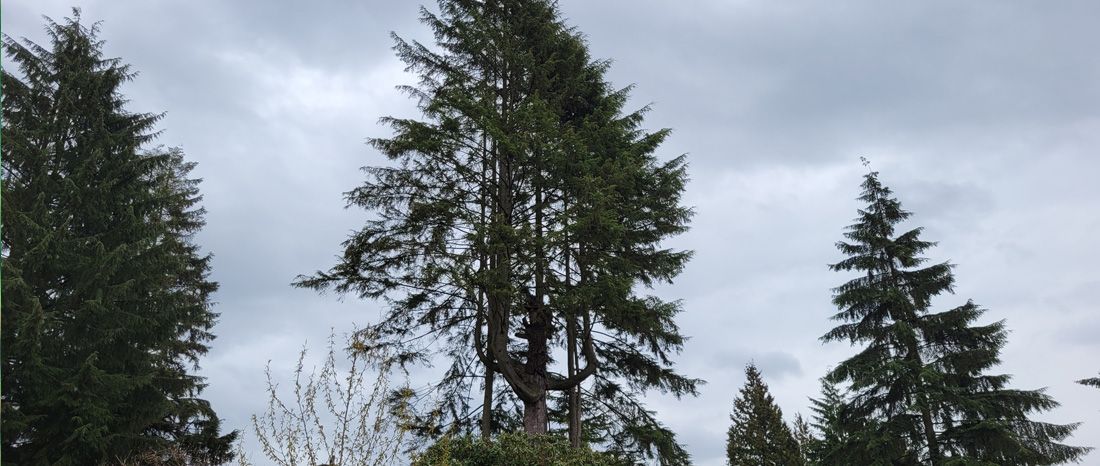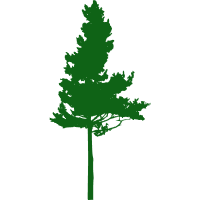Tree Topping » Why You Should Avoid this Harmful Practice
Cutting the tops off trees, known as tree topping, is a frequent practice among property owners and businesses, yet it can have severe repercussions for tree health and stability. It has become an unfortunately common practice among residential homeowners and commercial businesses. Nevertheless, this practice can have damaging implications for the well-being and steadiness of your trees.
This blog post will explore how topping affects a tree's natural form and growth patterns. We will discuss several reasons why cutting the top off a tree is a bad idea and provide alternative methods for maintaining the structures of a healthy tree. Furthermore, we will highlight the benefits of professional tree care services that adhere to proper pruning cuts and techniques.
By understanding why cutting the top off a tree is a bad idea, you can make informed decisions about caring for your property's greenery while preserving its beauty and integrity.

The Effects of Topping Trees
Tree topping is a harmful practice that can lead to numerous negative consequences for the health and appearance of your trees. This outdated method involves cutting off the top portion of a tree, leaving behind unsightly stubs and causing severe damage to the tree's natural form. This section will discuss some of the significant problems topping creates for residential homeowners and commercial businesses with trees on their property.
Negative Impact on Tree Health
One of the primary reasons why you shouldn't top trees is the negative impact on a tree's overall health. When you remove the uppermost parts of a tree, it can no longer carry out photosynthesis, diminishing its vigor and making it more vulnerable to illnesses and pests. It weakens the tree, making it more likely to get diseases and be infested by insects. Additionally, these trees often experience rapid regrowth, with weakly attached branches prone to breakage.
Weakened Tree Structure
A significant issue caused by cutting the top off a tree is weakened structure. When you cut off the top part of a tree, you remove its main growth point, forcing it to produce multiple new shoots from lateral branches to regain height quickly. These new shoots are often weakly attached to the remaining trunk due to the improper pruning cut made during topping. As these trees grow taller over time, they become more susceptible to breaking under stress from storms or high winds.
Aesthetic Damage
Topping destroys the natural beauty of a tree by leaving behind unsightly stubs and creating an unnatural, bushy appearance. A tree in good health with its full canopy is much more appealing than one topped and left disfigured.
- Lack of Natural Shape: A topped tree loses its natural shape and visual appeal compared to healthy pruned ones.
- Sunburn: Topping a tree exposes the remaining bark, which may lead to sunscald or sunburn, causing further damage.
- Weakened Structure: The new growth tends to be weaker, making them more likely to snap during storms, potentially damaging property.
Decreased Property Value
Trees are essential to your property's curb appeal and overall value. A well-maintained tree can increase the value of your home or business, while a topped tree with poor health and appearance can have the opposite effect. Research shows that healthy trees can add an average of 10% to the value of a property compared to properties without trees or with poorly maintained ones.
Increased Long-Term Costs
Although topping may seem like a quick fix for overgrown trees, it often increases long-term costs due to additional maintenance requirements and potential damage caused by weakened branches. Instead of saving money through this practice, you may end up spending more on future pruning services or even removal if the tree becomes too damaged or diseased as a result of topping.
Topping a tree can be hazardous, expensive, and severely damaging to the tree's well-being. There are better approaches for preserving safe and healthy trees in your surroundings.
Topping a tree can be detrimental, potentially leading to decay, a drop in property value, and long-term costs. It's best to avoid this outdated practice in favor of healthier pruning methods that won't harm your trees or wallet.
Alternatives to Topping a Tree
Rather than top trees, which can cause significant harm and long-term damage, there are several alternative methods for maintaining the health and appearance of your trees. Using other ways instead of topping, you can keep your trees looking great and staying strong without causing long-term harm.
Selective Pruning
Selective pruning is more effective for controlling tree growth and maintaining health. This technique involves carefully removing specific branches or limbs to reduce weight, improve the structure, or allow more sunlight to enter. Selective pruning helps maintain the tree's natural shape while promoting better airflow and reducing stress on the remaining branches.
- Crown Thinning: Removing select branches throughout the crown to increase light penetration and air movement.
- Crown Raising: Removing lower branches to provide clearance for buildings, vehicles, pedestrians, or views.
- Crown Reduction: Decreasing height or spread by selectively cutting back leaders to lateral branches.
Crown Reduction
Consider a crown reduction if it is necessary to significantly reduce a tree's size due to safety concerns or space limitations. Crown reduction involves shortening primary tree branches rather than indiscriminately cutting off large canopy sections. This method maintains a tree's natural form while achieving the desired results, such as reduced wind resistance, without causing undue stress on the tree. Keep in mind that this should only be done if it is necessary.
Hiring a knowledgeable tree specialist is the optimal solution to ensure that each tree on your property receives appropriate treatment under industry regulations. Ultimately, opting for these alternatives helps preserve the natural beauty of your landscape without compromising its health and longevity.
Benefits of Professional Tree Care
Hiring an experienced tree care provider is essential for preserving your trees' health, appearance, and durability. By investing in expert assistance, you can avoid the risks associated with improper tree-cutting practices. Some key benefits of hiring professionals for tree care include:
- Expertise: A certified arborist has extensive knowledge about various tree species and their specific needs. They can provide tailored advice on maintaining your trees' natural form.
- Safety: Properly pruning large tree branches or removing damaged limbs requires specialized equipment and training to ensure people's and property's safety. Professionals have extensive knowledge in using these tools.
- Disease Prevention: Well-maintained trees are less susceptible to diseases and insect infestations that could weaken them over time. Regular inspections by an arborist can help identify potential issues before they become severe problems.
- Aesthetic Value: Healthy, well-maintained trees add significant curb appeal to residential properties while providing shade, privacy, and other environmental benefits.
- Risk Reduction: A weakened tree poses a greater risk of damage during storms or high winds due to its compromised structure from nasty cuts such as topped trees. A professional will make proper pruning cuts, reducing this risk significantly. It is better to preserve your trees' health and enhance your landscape's aesthetic value through selective pruning instead of severely damaging pruning practices. We understand that each tree requires special care, and our certified arborists are well-equipped to provide it.
Hiring a professional tree care service is essential for the health and beauty of your trees, avoiding harmful practices like topping. Investing in an experienced arborist will ensure your landscape stays healthy, safe, and aesthetically pleasing.
Conclusion
Removing the uppermost part of a tree is not advisable. Topping trees can have long-term adverse effects on their health and growth and potentially hazardous consequences for people or property nearby. Professional arborists use proper pruning techniques to help your trees look better without sacrificing safety or health. By investing in professional care, you'll be able to enjoy healthy, beautiful trees for years to come.
At Abbotsford Tree Specialists, we help you make the right decision for your trees. Our experienced professionals can provide safe and practical solutions to ensure your trees stay healthy and beautiful.

